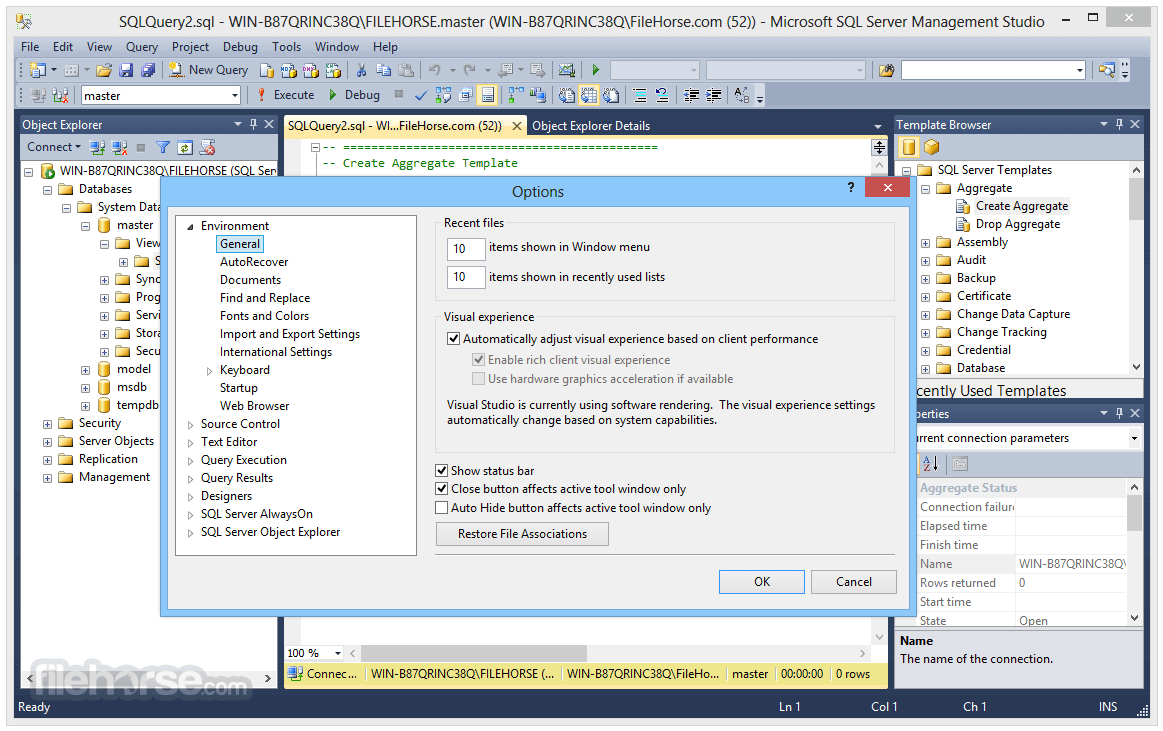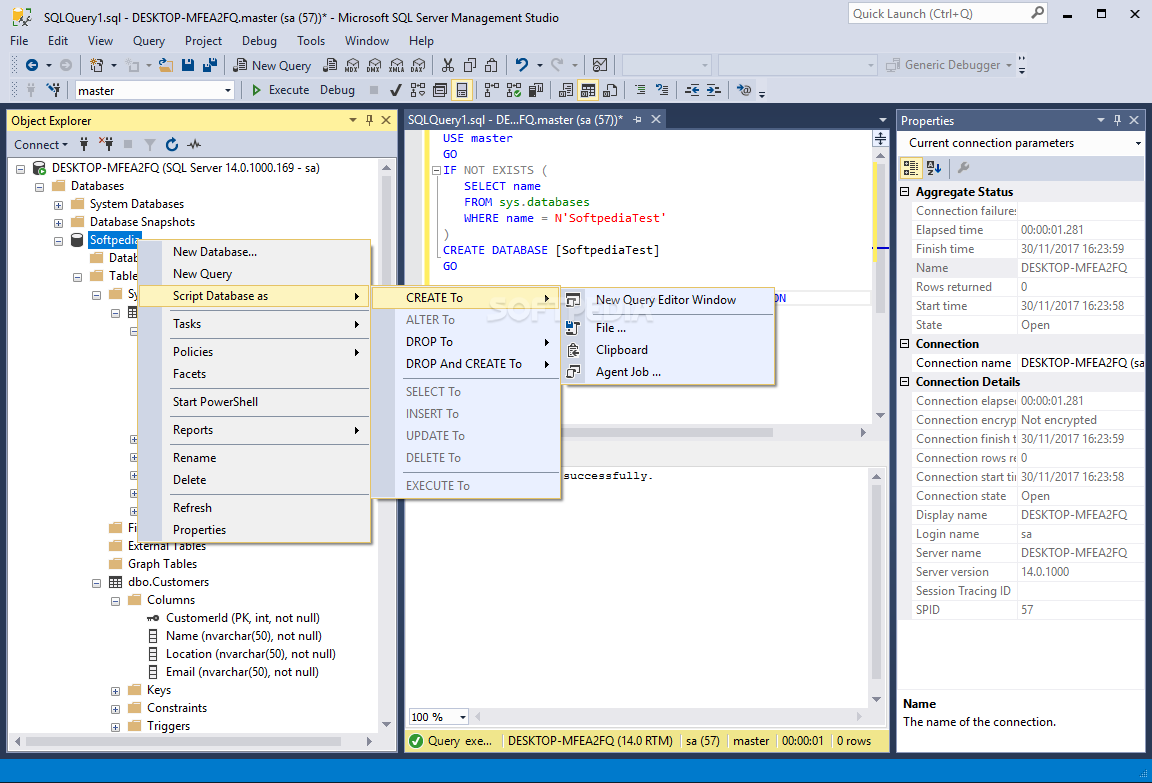

- #Sql server management studio latest version how to
- #Sql server management studio latest version full
#Sql server management studio latest version how to
See more details in How to backup remote SQL Server database using SQLBackupAndFTP Scripting database with SQL Server Management Studio (SSMS) Then configure compression, encryption, where to send backups and where to send email notifications. Just select “Remote SQL Server” as a server type set login credentials: This is by far the simplest method to backup your remote databases. You have several options to generate a script (*.sql) backup file Scripting database with SqlBackupAndFtp The script includes commands to re-create the database schema (tables, views, stored procedures, triggers, full-text catalogs, roles, rules, and so on) and the data. Remote SQL Server backups to a script (*.sql) fileĪ generated SQL Server script (*.sql) backup file contains the information that is necessary to re-create the database on a remote computer. Visit the link above for details on permissions. The downside is basically related to the need to configure access rights correctly. The benefit of backups to UNC path is that you get the backup in the same coveted *.bak format.

You can write your own scripts to automate it or backup your network SQL Server using SQLBackupAndFTP. If your remote SQL server is on the same network as you and both SQL server and you have access to the same network share (like \\servername\path ), then on the SQL server you can backup to this location with the command like:īACKUP DATABASE dbname TO DISK = N’\\servername\path\dbname.BAK’Īnd from your your own computer you would be able access the same location, take the *.bak file and do what you want with it. Remote SQL Server backups to a *.bak file on network share

You can build your custom scripts to do it or get it all in a product like SQLBackupAndFTP. Then you usually compress the file, encrypt it, upload to a network drive, FTP or a cloud, etc. This creates a *.bak file on Server’s local file system. Basically, you run BACKUP DATABASE command, use SQL Server Management Studio or 3rd party tools. Local SQL Server backup is well documented and we won’t get into the details of it here.
#Sql server management studio latest version full
Local SQL Server is a server where you have full access to the file system like a local server you can physically access or a dedicated/virtual server that you have full control of. Remote SQL Server is a server where you have limited access to the server’s file system like in a shared hosting environment. We will explain why and show all the available options to make the backups anyway.


 0 kommentar(er)
0 kommentar(er)
